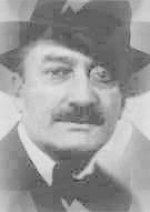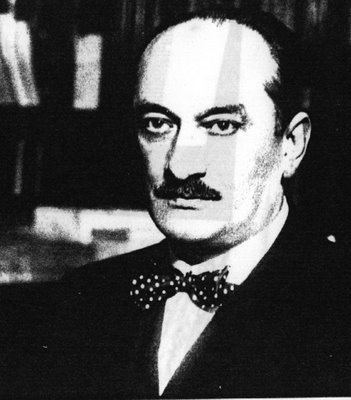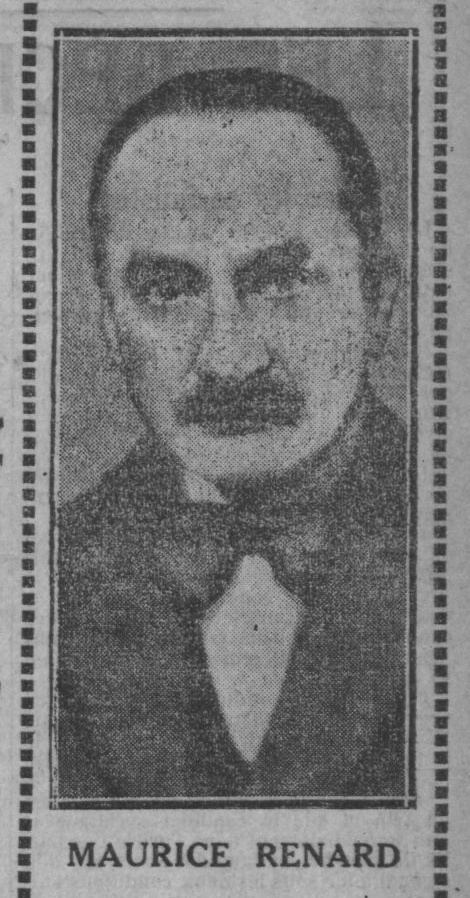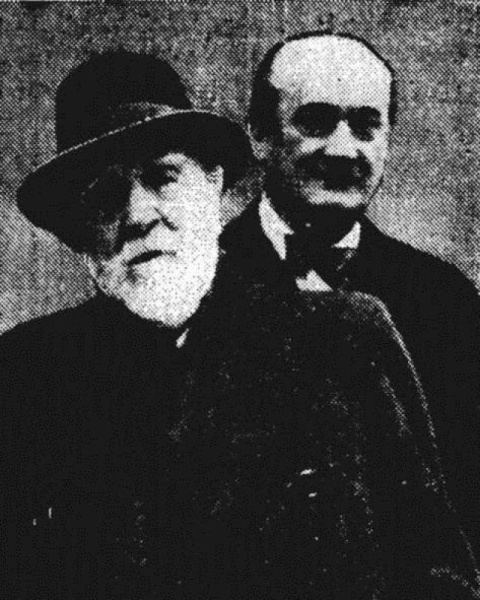Name Maurice Renard | Role Writer | |
 | ||
Died November 18, 1939, Rochefort, France Movies The Hands of Orlac, Hands of a Stranger Books The Blue Peril, The Master of Light, Doctor Lerne, The Doctored Man, A Man Among the Microbes Similar People Robert Wiene, Edmond T Greville, Newt Arnold, Jean Tulard | ||
Maurice Renard (28 February 1875, Châlons-en-Champagne – 18 November 1939, Rochefort-Sur-Mer) was a French writer.

Career

Renard authored the archetypal mad scientist novel Le Docteur Lerne - Sous-Dieu [Dr. Lerne - Undergod] (1908), which he dedicated to H. G. Wells. In it, a Doctor Moreau-like mad scientist performs organ transplants not only between men and animals, but also between plants and even machines.

Renard’s 1910 novel, Le Péril Bleu ("The Blue Peril") postulates the existence of unimaginable, invisible creatures who lived in the upper strata of the atmosphere and fish for men the way men captured fish. These aliens, dubbed “Sarvants” by the human scientists who discover them, feel threatened by our incursions into space the way men would be threatened by an invasion of crabs, and retaliate by capturing men, keeping them in a space zoo and studying them. Eventually, when the Sarvants come to the realization that men are intelligent, they release their captives. Le Péril Bleu predates Charles Fort’s Book of the Damned (1919) and retains a humanistic and tolerant rather than fearful and xenophobic philosophy.
In 1920, Renard wrote the classic Les Mains d'Orlac ("The Hands of Orlac"), in which a virtuoso pianist receives the transplanted hands of a murderer and turns into a killer himself. The book was thrice adapted to film as Orlacs Hände (1924) with Conrad Veidt, Mad Love (1935) with Colin Clive and Peter Lorre, and The Hands of Orlac with Mel Ferrer and Christopher Lee.

L'Homme Truqué ("The Phony Man", 1923) features the graft of “electroscopic” eyes onto a man blinded during World War I. The result is the strange description of a world perceived through artificial senses.
L'Homme Qui Voulait Être Invisible ("The Man Who Wanted To Be Invisible", 1923) deals with the issue of invisibility; in it, Renard exposes the scientific fallacy inherent in Wells’ famous novel. Since, in order to function, the human eye must perform as an opaque dark room, any truly invisible man would also be blind!
In the controversial Le Singe ("The Monkey", 1925), written with Albert-Jean, Renard imagined the creation of artificial lifeforms through the process of “radiogenesis”, a sort of human electrocopying or cloning process. The novel was ferociously attacked by the Roman Catholic press, which saw it as sacrilegious, and blacklisted by public libraries.
Un Homme chez les Microbes: Scherzo ("A Man Amongst The Microbes: Scherzo", 1928) was one of the first scientific novels on the theme of miniaturization, and one of the first to introduce the concept of a micro-world where atoms were microscopic solar systems with planets, etc. Renard’s hero submits himself willingly to a shrinking process that eventually ran out of control. As in Richard Matheson’s 1956 classic, The Incredible Shrinking Man, the hero is then attacked by various insects, etc., before eventually arriving on an electron-size planet, where scientifically advanced people are able to reverse the process and send him home.
Finally, Le Maître de la Lumière (The Light Master", 1933) anticipated Bob Shaw’s "slow glass" by introducing the concept of a glass that condenses time.
